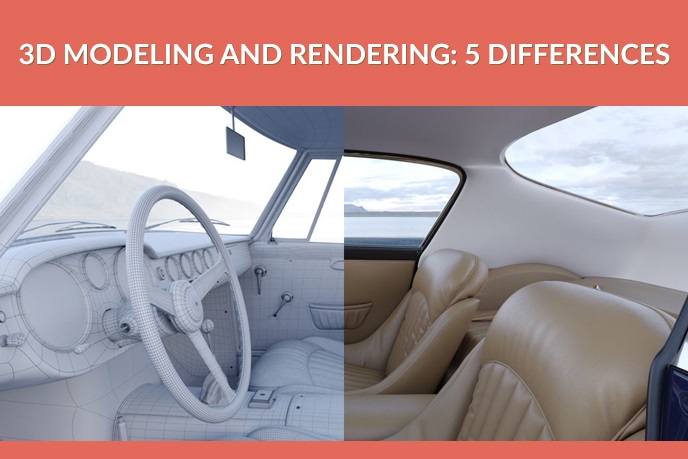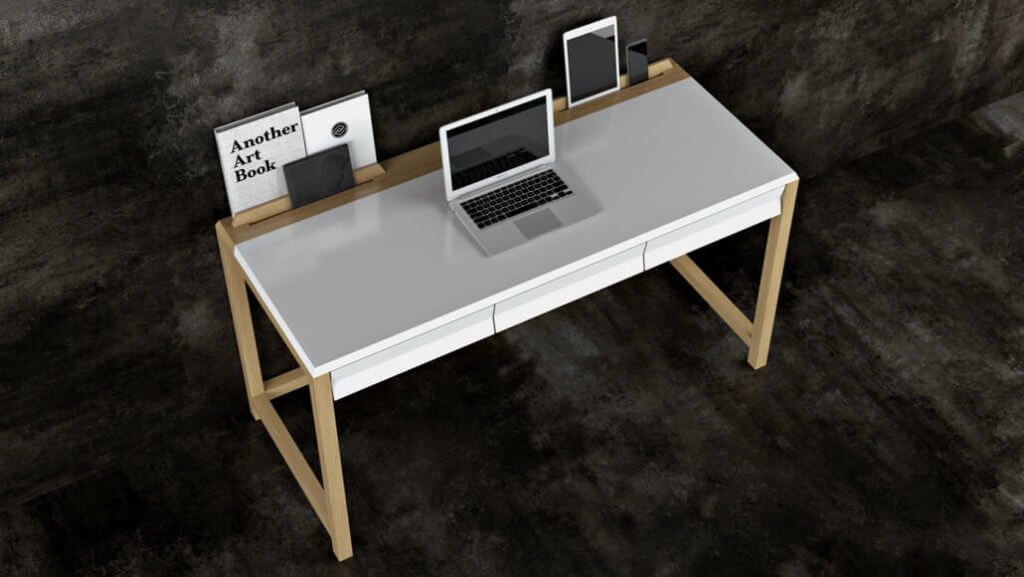3D MODELING AND RENDERING: 5 DISTINCTIONS
3D modeling and rendering both relate to computer-generated imagery, and it leads to misunderstanding. There’s a task a 3D modeling studio can solve, but it remains unclear which service is to apply for.
Luckily, after reviewing the task description and asking clarifying questions, a sales specialist can recommend the relevant service. But it’s so time-consuming! And how to know for sure if the result will come as expected at the first try or only after a revision? To apply again means to waste time and incur additional cost.
Even more, those who don’t know the difference between 3D modeling and rendering will encounter the same problems when they need 3D graphics. They will spend more time whenever reaching out to a 3D modeling studio. And the doubt every time remains whether the price is estimated fairly.
Knowing the difference makes communication with a 3D modeling studio more productive and cost-effective. For your convenience and confidence, we are sharing five key differences between 3D modeling and rendering services. Read on!
#1. 3D Modeling and Rendering Differ by Results
3D modeling results in a 3D file containing a geometric representation of an object. A model has three dimensions, like a real physical body. To make a model, a 3D artist needs the exact sizes and complete comprehension of the form.
Rendering is an artistic representation of modeled objects in a form of a still image or animation. Speaking more precisely, it’s a computer simulation of a shot or footage. The resulting pictures or videos are called renderings or just renders.
Video renders are especially engaging and entertaining when it comes to digital storytelling. Because videos require 3D product models, a marketer needs both 3D modeling and animation when aiming to post one.
#2. 3D Rendering Follows 3D Modeling
3D modeling and 3D rendering are two subsequent stages of CGI creation. First of all, a 3D artist builds a 3D model. For most use cases, a model need a realistic look as if actually made of wood, stone, glass, or any other materials. So, the CGI professional textures it. Modeling ends here.
Now, the rendering process begins. At this stage, also called visualization, a 3D artist builds the scene. Namely, she arranges the models in a three-dimensional space, customizes lighting and positions a camera, also tuning various of its options. As everything is ready, it’s time for computation to get imagery. A computer simulates a perspective of the models with all lights, shadows, and textures.
The result of rendering can be indistinguishable from a photo: most customers don’t have an idea that lots of product images are 3D graphics.
#3. 3D Modeling and Rendering Need Unlike Tools
A freelance 3D artist typically does both modeling and rendering. By contrast, at a 3D modeling studio a modeler and a renderer are two separate professions. The reason is that 3D modeling and 3D rendering require different software and techniques – and specialization allows for better results a more predictable workflow.
Sometimes, a client can make a model by himself, namely export it from a CAD app or use a 3D scanner. Otherwise, 3D artists will use modeling software such as SketchUp, Rhino, Blender, 3ds Max, or Maya.
All of the modeling applications above feature a rendering engine. However, 3D rendering professionals use more specialized programs such as Mental Ray, V-Ray, 3Delight, SOLIDWORKS Visualization, Corona Renderer, or Lumion.
#4. 3D Models Can Be Reused in Further 3D Renders
As a geometric object, a 3D model is very easy to modify. Also, it can travel from a render to a rendure resulting in completely different pics. There are visualizations built entirely on ready-to-use models.
In practice, it means that one single model can find use in several hero shots and lifestyle images with different backgrounds, serving different purposes. Created once, a model can represent manifold color varieties and design options. Thus, a 3D model of a sofa is enough for 20 to 30 catalog images, a website and design presentations. Slightly optimized, it can make a part of an application. Even more, the model can become a basis for 3D models of next year’s collection.
On contrary, a render is much harder to edit – especially an animated one. Instead, an image or video is easier to store and display as is on almost any device. And it’s a render that strikes imagination and gives a realistic view of an object.
#5. 3D Modeling and Rendering Find Different Uses
There are a lot of 3D model use cases beyond rendering. For instance, 3D printing is a fast way to get a device shell, a door handle, a sculpture, or even an implant or prosthesis. And a CNC machine can produce a metal detail based on a 3D model. Also,f 3D modeling allows for 360° views of products on product pages. Video games and interactive walkthroughs of building projects are other applications of 3D models and examples of real-time rendering.
3D rendering as a service comes in handy when aiming to demonstrate the benefits of a product or service. Outside product pages and presentations, it provides stunning product imagery for practically all marketing channels from the website to TV commercials. There are many ways to make marketing more effective with 3D renders.
Now that you have learned the difference, anytime you need 3D graphics you will know for sure which service to apply for. And you will be aware that the studio is going to do exactly what you need.
Want quality computer graphics for your project? Contact us for 3D modeling and rendering services and get accurate models for further use or stunning imagery that precisely convey the value of your business.
Let us know if you’ve got an interesting project and want to work together!








One Comment on “3D MODELING AND RENDERING: WHAT’S THE DIFFERENCE? 5 EASY POINTS”
Great Blog, Really helpful. Makes perfect sense to use 3d modeling for selling cars. It’s hard to synchronize everything perfectly, and with CGI I always have my pics and videos on time for the campaign.